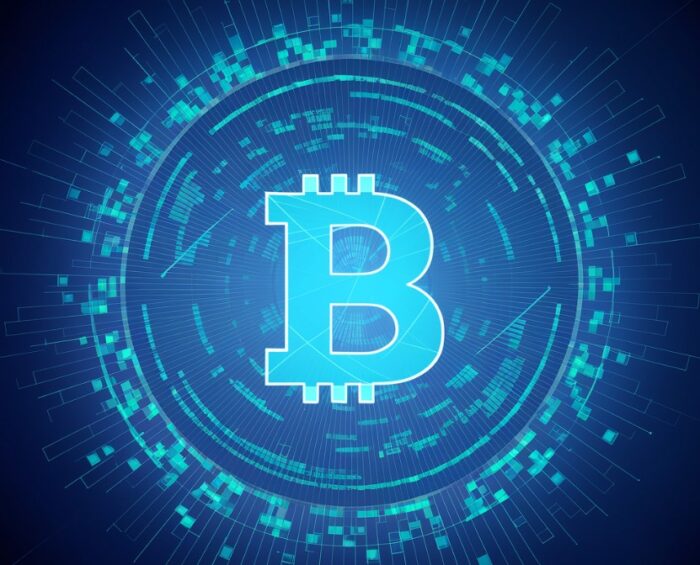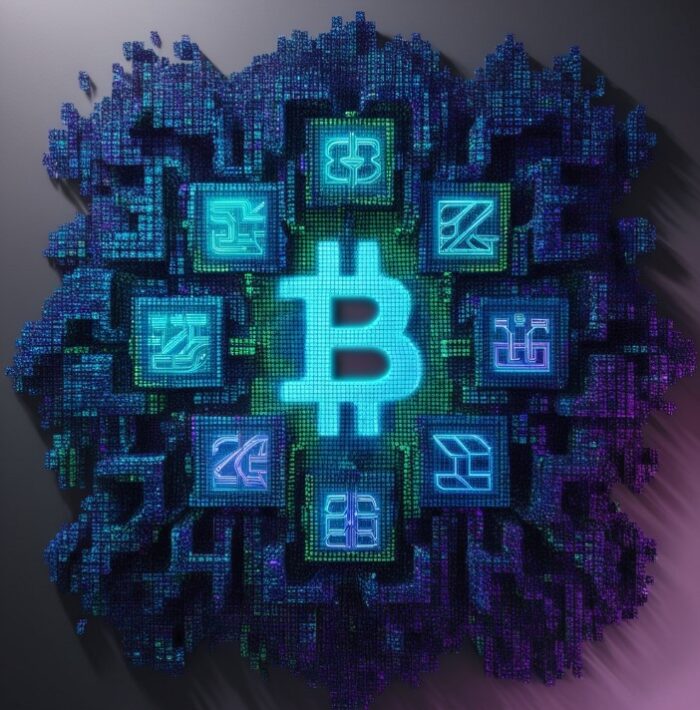
In an age where digital security is paramount, the term “blockchain” is often whispered like a technological incantation, revered for its robust security and revolutionary potential. Yet, despite its popularity in tech circles and the media, blockchain remains shrouded in a veil of mystery and misconception. Let’s embark on a journey to demystify this digital enigma, not through the lens of complex algorithms or cryptographic jargon, but by exploring its fundamental essence and the groundbreaking promise it holds for our future.
Imagine a world where digital information is not just stored but enshrined—where each piece of data is locked away like a time capsule, impervious to tampering and decay. This is the world of blockchain. At its core, blockchain is a technology that allows data to be stored across a network of computers, making it not only decentralized but also incredibly difficult to manipulate. This method of storing information—akin to writing indelible ink across the sky—ensures that once data is recorded, it becomes a permanent fixture of the digital landscape.
What sets blockchain apart is not merely its security features, but its profound versatility. Originally devised for the digital currency Bitcoin, the potential applications of blockchain stretch far beyond cryptocurrencies. From securing medical records to ensuring the integrity of electoral processes, blockchain stands as a sentinel in an increasingly digital age.
In the following sections, we will peel back the layers of this technological marvel, exploring its origins, mechanics, real-world applications, and the challenges it faces. As we traverse the complex terrain of blockchain technology, we aim to transform confusion into clarity and skepticism into understanding. Join us as we unlock the secrets of blockchain, revealing not just how it works, but why it matters in a world racing towards an interconnected digital future.
The Genesis of Blockchain: Beyond Bitcoin
Long before it became the backbone of cryptocurrency, the concept of blockchain had simmered in the minds of visionaries who saw potential in a secure, decentralized ledger. Though often tied synonymously with Bitcoin, blockchain’s journey began in the realms of academia and secure communication, not just finance. This narrative delves into the lesser-known prelude of blockchain, setting the stage for a technology that would later revolutionize the digital world.
When was blockchain created? The seed of blockchain was planted in the early 1990s, not with the intention of creating a new currency, but with a simpler aim: to timestamp digital documents so that they could not be backdated or tampered with. This idea, introduced by Stuart Haber and W. Scott Stornetta, was the embryonic form of what would eventually evolve into blockchain technology. They proposed a system where document timestamps could be secured in a chain of cryptographic proofs—a concept that would become the bedrock of blockchain’s architecture.
Fast forward to the early 2000s, and these foundational ideas began to coalesce into more defined prototypes. Yet, it wasn’t until a person (or group) known as Satoshi Nakamoto introduced Bitcoin in 2008 that the concept of blockchain truly gained momentum. Nakamoto’s whitepaper didn’t just propose a digital currency but envisioned a fully decentralized system where transactions weren’t just possible without a central authority but were also secure and private.
In this chapter, we will explore how blockchain’s foundational technology developed quietly in the background, touched by the hands of cryptographers and computer scientists who were solving puzzles far removed from financial applications. We’ll examine how these early innovations set the stage for a revolution in digital trust, paving the way for blockchain’s myriad applications beyond its first famous implementation, Bitcoin.
As we uncover the roots of blockchain, it becomes clear that its potential is not confined to any single sector or discipline. Instead, blockchain is a versatile technology, born from a simple need to preserve the integrity of information, which has grown into a tool capable of transforming industries worldwide. Join us as we trace the steps of those early pioneers whose vision and ingenuity gave rise to the blockchain, revealing a story of technological evolution that continues to unfold and inspire.
Anatomy of a Blockchain: Blockchain definition
Imagine a blockchain as a series of interconnected puzzle pieces, where each piece is a block containing a history of transactions. This metaphor not only simplifies the concept but also emphasizes how each block relies on its predecessor, maintaining the integrity of the entire chain.
At its core, each block in the blockchain holds a list of transactions, similar to a page in a ledger. What links these blocks into a chain is a cryptographic hash, a unique fingerprint derived from the contents of the block. Changing any information alters the fingerprint, breaking the chain unless corrected.
Envision these puzzle pieces as transparent, allowing anyone on the network to review the transactions recorded in the blocks while keeping personal data private and encrypted. This visibility paired with privacy is managed by nodes—computers on the blockchain network that validate new blocks and enforce the network’s rules, ensuring reliability and resistance to fraud. For instance, the blockchain Litecoin wallet exemplifies how users can securely store and manage their Litecoin transactions using this technology.
This streamlined explanation sheds light on blockchain’s structure, making it less of an enigma and more a revolutionary digital ledger system. As we delve deeper, the transformative potential of blockchain technology across various sectors will become more apparent.
What is blockchain?
As we delve into blockchain technology, two fundamental questions arise: What is blockchain and how does it work, and what is its purpose? Understanding these aspects helps us appreciate its potential across various industries.
Blockchain serves as a distributed ledger managed by multiple network participants. It consists of a series of blocks containing transaction batches, linked and secured through cryptography. Each new block must be verified by network nodes via a consensus process, ensuring the ledger is consistent and tamper-resistant. This ensures data integrity and transparency.
The purpose of blockchain extends beyond merely recording transactions. It aims to establish a trustworthy environment where data is transparent and ifmmutable once recorded. This is crucial in areas requiring high trust levels, such as financial transactions, supply chain management, and voting systems. By removing the need for a central authority, blockchain promotes a new trust and cooperation paradigm, minimizing corruption and failure points.
Ultimately, blockchain is about more than data recording; it revolutionizes how information is verified, secured, and trusted. Its resilience against fraud and power decentralization capabilities make it a viable solution for current data security and management challenges. Blockchain’s potential is vast, promising to transform financial systems and other sectors dependent on data integrity.
Blockchain in Cryptocurrency: Reinventing Financial Transactions
As we explore the digital landscape, a common inquiry emerges: What is blockchain technology? Simply put, it is a revolutionary system that records transactions across multiple computers in such a way that the record cannot be altered retroactively. This foundational technology underpins the operation of cryptocurrencies, making it a pivotal element in the modern financial sector.
Blockchain in cryptocurrency exemplifies a transformation in how money is exchanged and secured. Traditionally, financial transactions required the oversight of central authorities like banks. However, with blockchain, these transactions are decentralized, recorded on a public ledger that is accessible to all users yet secure and immutable due to cryptographic principles.
This unique attribute not only enhances security and reduces fraud but also increases transparency and trust among users. By leveraging blockchain, cryptocurrencies like Bitcoin provide a secure, efficient, and direct way of conducting transactions, bypassing traditional financial intermediaries. This shift not only challenges the existing financial landscape but also opens up new avenues for global financial participation and innovation.
Future Frontiers: The Evolving Blockchain Landscape
Blockchain technology is not just reshaping existing systems; it’s paving the way for future innovations. As we look beyond current applications, the potential for blockchain extends into areas like space exploration data management and deep-sea research, where secure, transparent data handling is crucial. The debate among experts about blockchain’s future roles highlights both its potential and its challenges. This exploration not only promises to expand blockchain’s capabilities but also to deepen our understanding of its practical implications in novel and demanding environments. The integration of blockchain with specialized applications, such as the blockchain Litecoin wallet, showcases its adaptability and future potential in diverse areas.
Conclusion: The Blockchain Mosaic
As we conclude our exploration of blockchain technology, we see it as more than just a tool for financial transactions. Its ability to secure, verify, and permanently record data offers a broad spectrum of applications that promise to revolutionize various industries. By ensuring transparency and trust, blockchain is shaping a new era of digital communication and record-keeping. This journey through blockchain’s capabilities and potential illustrates its profound impact on how we manage and trust digital information. As blockchain continues to evolve, its transformative power remains a beacon of innovation and efficiency in the digital age.
>>> Read full article>>>
Copyright for syndicated content belongs to the linked Source : ChartAttack – https://www.chartsattack.com/understanding-blockchain-technology-what-is-blockchain/



































